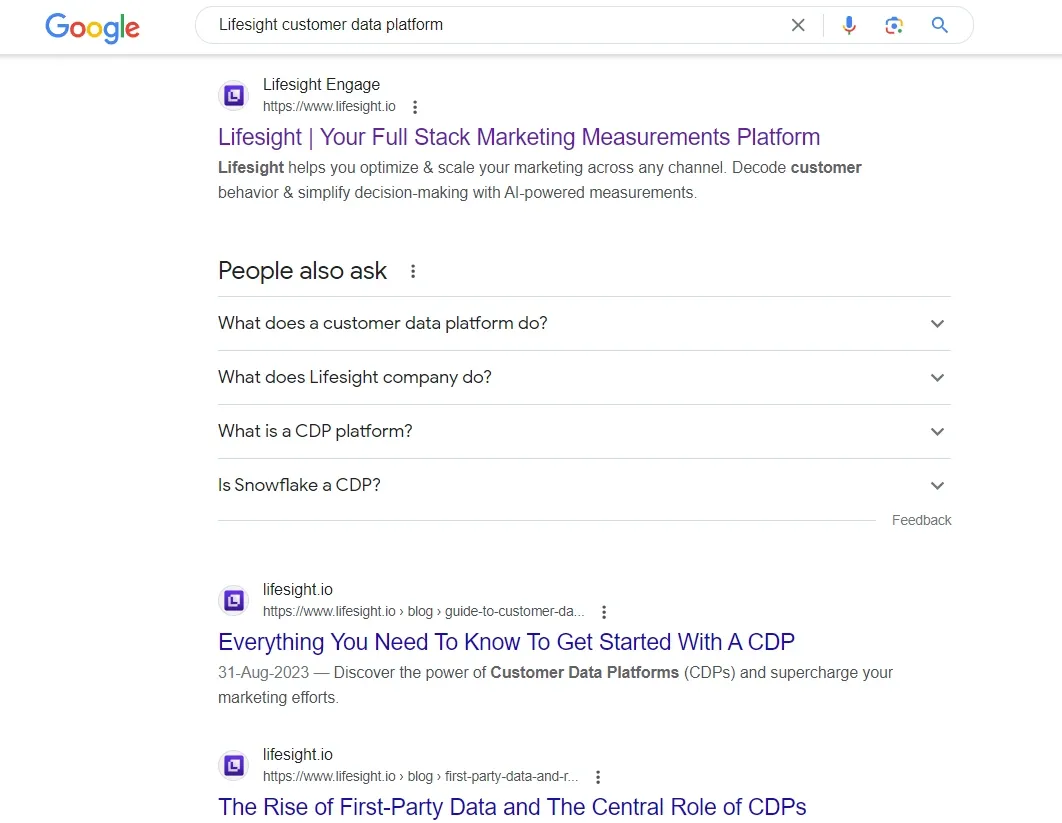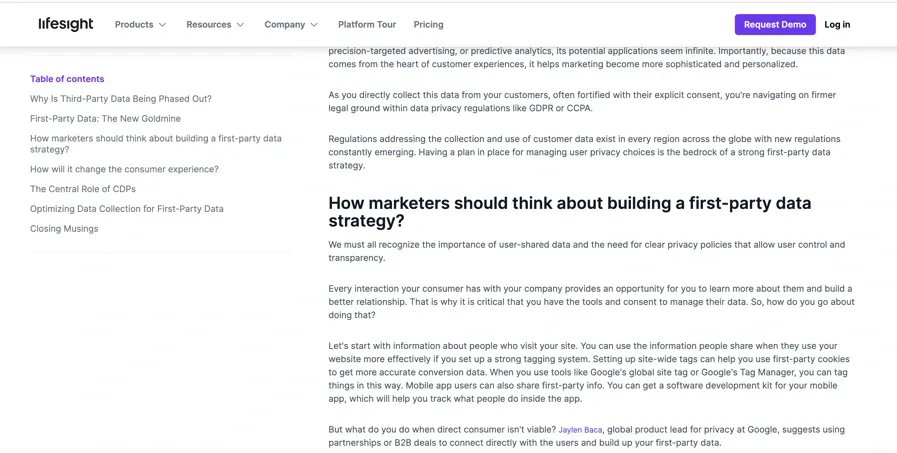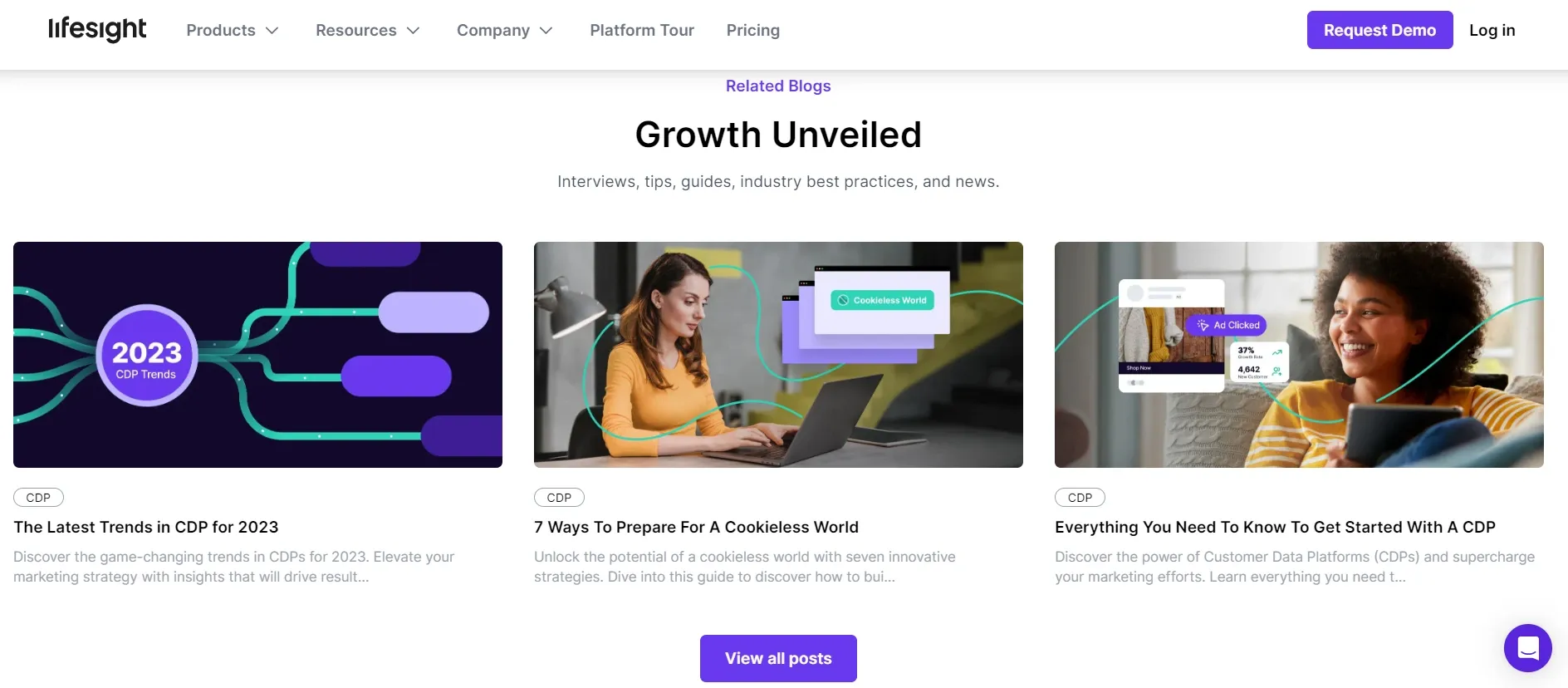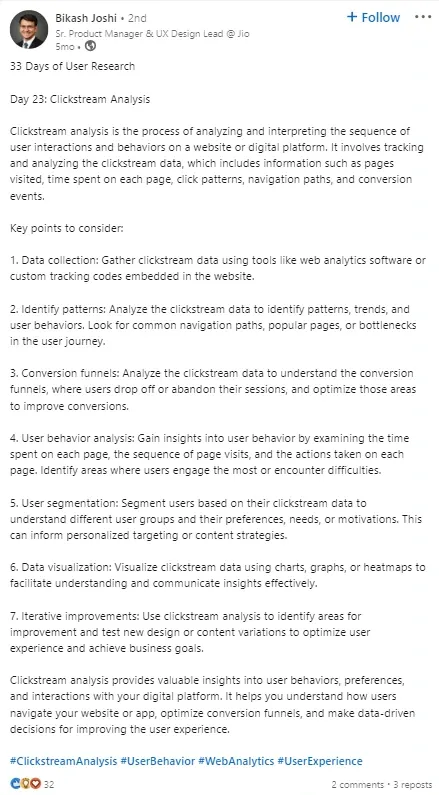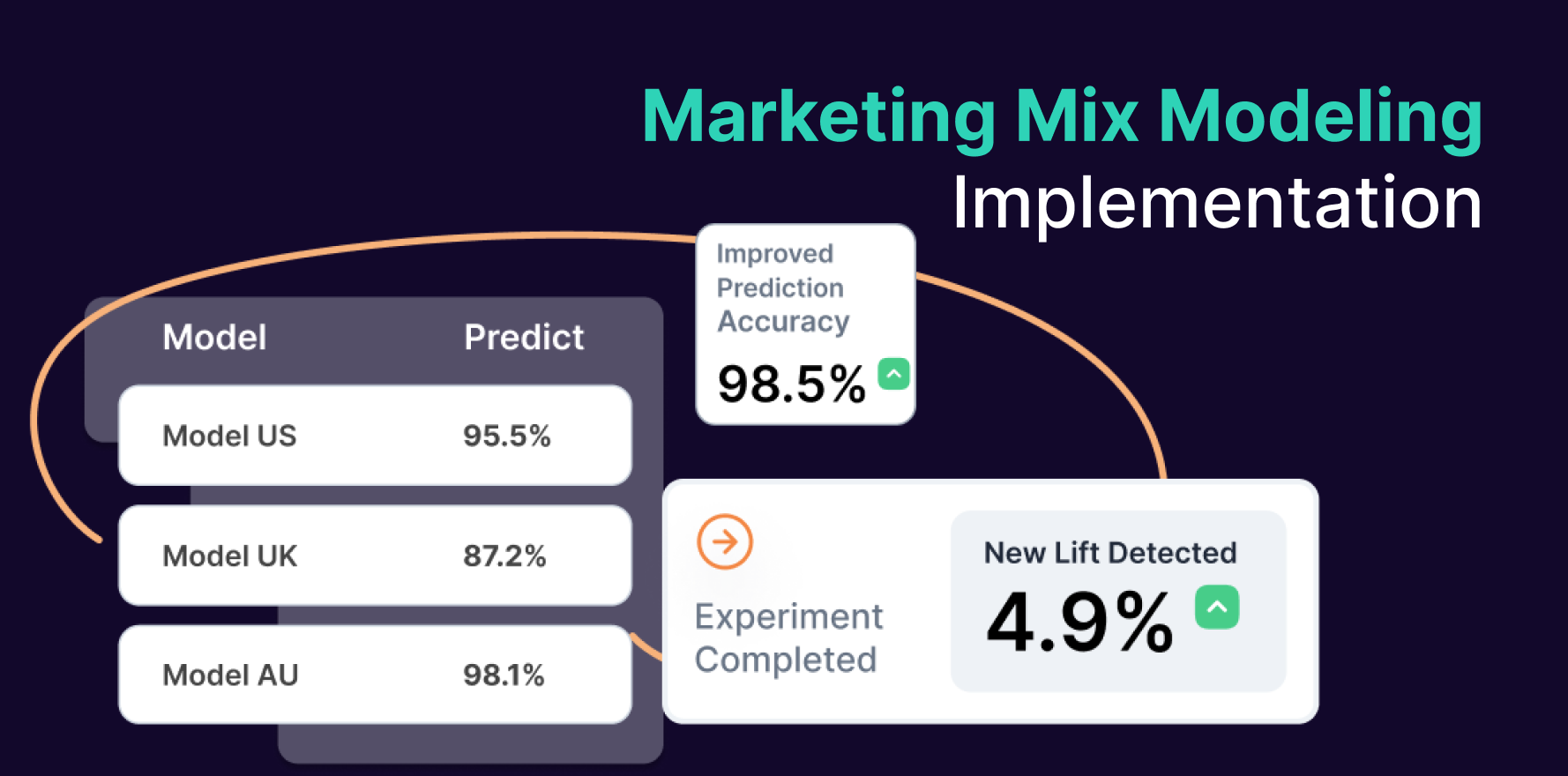The online marketplace is crowded and plagued with intense competition. Gathering customer data and analyzing it to craft data-backed impactful strategies is imperative to drive business growth, but is that enough? Probably not; a thorough competition analysis is what it takes for a business to stay ahead. However, in a world where customer privacy matters the most, gathering data, whether internal (own website) or external (competition website), can be complex.
Enter clickstream data and clickstream analytics, a goldmine of insights to understand user behavior. However, deriving insights from clickstream data requires proper processing of such data, and only a few customer data collection platforms (CDP) have this expertise.
In this blog, we dive deep into understanding what clickstream data is, its importance in the current digital business landscape, and how Lifesight seamlessly integrates clickstream data in its toolkit to help businesses understand the effectiveness of their online storefront and ways to improve.
With over 5 billion internet users globally and retail e-commerce sales expected to exceed $5.7 trillion, clickstream data is the next big thing. The clickstream analytics market will be worth $251.16 million by 2026. The importance of clickstream data cannot be undermined in the current business climate.
What Is Clickstream Data?
At its core, clickstream data is the digital footprint users leave behind as they navigate through websites and online platforms. Simply put, it is a user’s journey on a website or mobile application. Such data tracks every single click a user does on a browser. The data collected is stored in data log files or databases and provides deep insights into a specific user’s behavior and preferences.
As a user explores a website, clickstream records every click on the screen and stores it in a log. The data log contains information such as website URL, browser details, and events (log-in, log-out, product added to and removed from cart, mode of payment, product ID, total time spent per session, etc.). Information like the website link a user clicked on, the web page visited, the sequence in which websites and pages within them were browsed, average time spent per page, ads clicked on, CTAs and weblinks clicked, kind of interaction on a website are all examples of clickstream data.
Let’s understand clickstream data with the help of an example. Say you type Lifesight customer data platform on a Google Chrome browser. The below screen appears:
Clickstream Data Example
Next, you click on the third link appearing on the search results, which leads you to the blog page below:
Clickstream Data Example Lifesight Blog
When reading the blog, you scroll down to see the bottom with links to other blogs. To learn more about CDP, click on the next blog or one of the product features in the footer.
Clickstream Data Example Lifesight Blog Footer
By tracking your clickstream, Lifesight knows how much time you spent reading the blog, which sections of the blog you went back to repeatedly, and what were your following actions. Armed with this data for you and several other website users, Lifesight knows what kind of content to create to get more demo requests and blog topics that may interest you, which can help them showcase suggestions personalized to your interest and more.
This is not it; there are umpteen benefits of harnessing the power of clickstream data for a business. Let’s find out what are these.
Benefits of Analyzing Clickstream Data
Any collected data must be cleaned, organized, and structured to make sense of it and derive insights. This process of tracking, cleaning raw clickstream data, and putting it in an easy-to-understand structure is clickstream analytics.
Accessing user behavior data on a competitor’s website can be an excellent way for brands to optimize their website and create a marketing plan to drive more audience engagement and better sales. But that is a far-fetched dream.
This is where clickstream data analysis can be essential for brands and drive significant benefits for businesses across sectors. Clickstream data gives deep insights into a customer’s journey on a website. However, just having this information is not enough.
There are several ways in which businesses can leverage this wealth of data and reap benefits.
1) Deep understanding of customer navigation behavior
It helps businesses understand how users navigate and interact with various online platforms (apps/websites). Regarding e-commerce websites, their online presence is the only point of contact with a customer. Getting this experience right is, therefore, critical, and clickstream data gives brands the data that can help them better understand the most comfortable navigation path for a customer.
2) Optimized User Experience (UX)
Clickstream data is a goldmine of information containing details on views: products searched for, products bought and rejected, average time spent on a page, following action, CTAs clicked, and more. This information allows brands to deliver a more personalized and easy-to-navigate user experience.
YouTube, for example, suggests videos to a user basis the kind of videos saved for ‘watch later’ and the kind of videos a user completed in the past. This makes the user experience flawless as they can quickly locate the content they are searching for.
3) Hyper-personalized targeted marketing campaigns
Clickstream data enables marketing teams to segment customers. It gives insights like where your customers are coming from, their age group, what is it that they are looking for, and many such small details. Armed with this data on what excites a specific customer group, what engages them more, and what is helping get those conversions. This clear understanding of what interests a particular set of users enables marketing teams to design targeted, personalized, and effective marketing campaigns for each.
For an online store selling apparel and cosmetics, sharing promotions and recommendations for cosmetics to a user buying apparel is of no use. It may be perceived as spamming for them, resulting in irritating them. Clickstream data helps group customers and send them information and recommendations relevant to them.
4) Reduced Cart Abandonment
The cart abandonment rate in 2023 was 70.19%, which is enormous. By using clickstream data, online retailers can identify the pain points in the checkout process, why users do not complete a purchase, and what helps convert those carts into actual purchases. With this information, a business can iron out the pain points, ensuring a smooth, hassle-free checkout and driving more sales.
Bikash Joshi, Sr. Product Manager & UX Design Lead at Jio, shared his insights on key points to consider while analyzing clickstream data.
Analyzing Clickstream Data Social Proof
Now, let’s delve deep into the components that qualify as clickstream data.
Components of Clickstream Data
1) Page Views: A record of every page a user visits on your website.
2) Click Paths: The sequence or order in which a user visits pages on a website. If a user visits a homepage, clicks on the product page then clicks on resources, selects case-study, and heads to the page to read a case study, all of the pages a customer visited on your website get recorded. This information can tell you a lot about how users navigate your content and help you identify ways to improve the user navigation experience on your website.
3) Entry and Exit Pages: The entry page is where a user starts their journey on your site, and the exit page is the last one they visit before leaving. Knowing these can help you understand what attracts users to your site and what might be causing them to go.
4) Time Spent: A high bounce rate indicates potential problems on your website. In the internet world, if a user visits your website and leaves without visiting any pages, it is known as a bounce. Time spent measures how long a user spends on a specific page or your site. This data can help identify pages on your website that are appealing to your users, and you can accordingly make improvements on other pages to enhance user engagement.
5) Clicks: Any click on a link, button, image, or any interactive element on a website the user clicks on gets recorded. Understanding the factors that engage customers more can help improve other similar elements on your website.
For example, you may have CTAs in 2 color schemes (orange and blue) on your website, and by analyzing the clicks, you may realize that orange CTAs have a higher click rate than blue. Then, consider changing other CTAs to orange as well.
6) Referring URLs: It helps identify external links that may drive traffic to your website. This data lets you understand which external sources drive traffic to your site. A Google search, social networking, or a reference link on another website. This statistic shows how much SEO your website needs.
7) Search Terms and Queries: If your website has a search function, this data records what terms users are typing in. It’s a direct insight into what your users are looking for.
8) Error Messages: If users encounter any errors while on your site, like a broken link or a 404-page error, it gets logged here. This can help in identifying and fixing problems on your website.
9) Downloads and Uploads: Records any files or documents that users might download from your site or upload, like PDFs or images.
10) Shopping Cart Activity (for e-commerce sites): This tracks actions related to online shopping, such as adding items to a cart, removing them, or making a purchase.
Here’s a case study to see how clickstream data helps businesses make intelligent decisions, keep customers interested, and boost conversions.
Case Study: Leveraging Clickstream Data to Boost Sales
The Business: A small online store selling handmade crafts with a fairly decent presence and recognition among its customers.
The Challenge: Despite having a steady stream of visitors, sales declined, and many users left the site without making a purchase. The store had invested in paid ads on Google and was active on their social media page. However, there needed to be a way to track from which source they were getting more conversions.
Step 1: Gathering the Data
In the initial phase of enhancing the store’s digital strategy, a pivotal move was made to incorporate a clickstream data tool. This tool was instrumental in obtaining a wealth of information, such as user demographics, their behavior while navigating the website, and the specific paths they followed. It also provided insights into the products visitors most frequently searched. The store also aimed to identify potential bottlenecks by closely monitoring customer issues at checkout and tracking cart abandonment rates.
Step 2: Observations from the Data
After analyzing the data, the brand had the following findings:
- Most of the users came to the website through social media pages. Here, the brand had positioned itself as one that supported local crafts and artisans.
- The average age group was 25-40; most visitors were in metro cities.
- The visitors spent a long time on the ‘About’ page, which told the story of the crafters and also talked about the origin of specific craft techniques.
- Many users visited product pages but only spent a little time there or added products to their carts.
- The exit rate was highest on the checkout page.
Step 3: Inferences Drawn
To begin with, the page did not do an excellent job of selling the products because it lacked an engaging image and detailed information on the item. Secondly, users were interested in the story behind the crafts, suggesting they valued authenticity and connection. Thirdly, being a small business, the checkout process could have been better, discouraging users from completing their purchases.
Action Taken:
- For Product Pages: The store improved product descriptions and added more photos from different angles. They also included short stories about the crafters behind each product.
- For the ‘About Us’ page, they added video interviews with the crafters, giving a more in-depth look into their lives and crafts.
- For the Checkout Process: They simplified the process by reducing the number of steps and adding multiple payment options. They also included reassuring elements like security badges to build trust.
Results
After these changes:
-
- The add-to-cart rate improved by 25%
-
- Time spent on the ‘About’ page increased, but more importantly, it translated to higher sales of products associated with featured crafters.
- The checkout abandonment rate dropped by 40%
Conclusion:
By listening to the silent feedback of clickstream data, the online store improved sales and provided users with a better, more engaging experience. This case proves that with a bit of observation and action, clickstream data can genuinely transform a business’s digital journey.
The Endgame
With nearly 24 million online stores worldwide, the competition is intense. Traditional ways of analyzing user data no longer make sense in this ever-expanding realm of online shopping. Clickstream data offers easy-to-understand, real-time insights into customers” online behavior.
Lifesight Connect, with its deep segmentation capabilities and the ability to give a 360-degree view of customer behavior and a unified customer profile, helps you create data-driven strategies. Features like real-time CDP, first-party ID graph, server-side tracking, and more help generate more revenue per customer. Book a demo today to super-charge your business growth in a privacy-first era.
You may also like
Essential resources for your success

